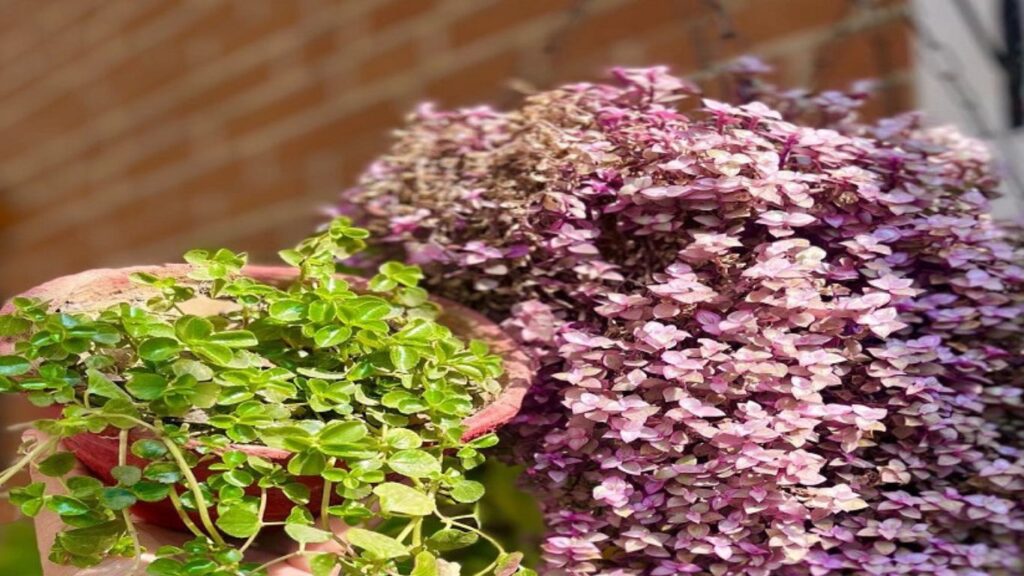How to care of pink lady plant. pink lady is a low-growing, perennial succulent plant. which typically grows in late spring and early summer.
Pink ladies are relatively low-maintenance plants that thrive in moist soil and relatively little exposure to direct sunlight.
Overall, pink ladies are low-maintenance and excellent ground dwellers. with this in mind, they are best used for tropical terrariums or displays that retain optimum humidity levels.
If you breed pink females, try to avoid prolonged drought due to their high risk of dehydration.
From Light
Although pink ladies are hardy plants, they are used to humid and temperate climates.
Don’t put your pink ladies by the window. Direct sunlight can be harmful to pink females, decreasing their chances of survival.
Instead, keep them at least 6 feet away from windows in bright, indirect sunlight. Move them closer to the window during the growing season from March to October.
From Water
How to care of pink lady plant when it comes to pink lady succulents, humidity is everything.
You want to avoid overwatering without allowing the soil to dry out completely.
To know when to water your pink lady plant, lift the container. If it feels light on your hands, it’s time to hydrate your plant.
How to care for the pink lady plant’s Water the soil thoroughly, but allow the top layer to completely dry before watering again. Soil should be moist, not soggy.
How to care for the pink lady plant’s Keep it in a container that allows for proper drainage.
If you live in a dry area, mist your pink lady regularly to increase moisture.
Symptoms of waterlogging include wrinkled, crisp, or yellow leaves with a gray appearance.
This usually occurs as a result of excessive heat and/or light.
Meanwhile, symptoms of overwatering may appear as yellowing of lower leaves, a rotten stem or lack of growth.
To prevent overwatering, don’t let your plant sit in wet soil or sit in a dark place for long periods of time.
Temperature and Moisture
How to care of pink lady plant from although pink ladies thrive on humidity, average room humidity should be adequate for them to grow.
In winter, the humidity should be between 30 and 40 percent. During summer, try to keep the humidity between 50 and 60 percent.
Watch for signs of low humidity like brown leaf-tips. If your pink lady’s humidity is too dry, spray your plants with a mist of water once a week.
Pink Lady plants thrive between temperatures of 50 and 86 degrees Fahrenheit.
The Ground
plant’s from Interestingly, pink ladies are not very picky about their soil. Just make sure to choose a potting soil that allows for proper drainage.
Some other options include mixing peat moss with regular potting soil, succulent soil mix, or extra perlite.
Manure
How to care of pink lady plant for Fertilize the plant during every four waterings during the growing season. In the winter, fertilize your pink ladies after the sixth watering.
Potting and Repotting
Overall, you don’t need to re-pot pink lady succulents very often. It is possible to keep pink ladies in
the same container for up to three years because they are less succulent. Given that it can take 3-6 years for the plant to reach full height,
Pink Lady plants can grow up to 4 inches tall and spread up to 4 feet. hey can even grow to 50 cm! So, unless absolutely necessary,
avoid repotting your pink ladies prematurely to encourage flower growth. This is to prevent root rot and transplant shock,
which can cause plants to lose their leaves, wither, or die. When it’s time to repot your pink ladies, hydrate the succulents 24 hours in advance to prevent transplant shock.
If they are placed in a darker area, add additional grit and perlite to the deeper part of the pot. This will prevent root rot and excess water.
In Full Bloom
Pink ladies grow between late spring and early summer, but it can carry through to autumn.
It is best to take advantage of the months between March and July, when pink females are born. They are defined by green striped leaves with pink,
creamy flowers that droop down the edge of the planter. In late fall and winter, their leaves turn a deep shade of purple or burgundy.
They are great for hanger planters and can survive as a houseplant easily.
Promotion
How to care of pink lady plant for You can propagate the pink lady using three methods: seeds, offsets or cuttings. To begin,
propagate the cuttings using scissors and cut a stem with 4-5 leaves. Keep them in a container that allows for proper drainage.
Although its propagation is time-consuming, an offset refers to a cloned plant that was grown from the original.
From here, use sharp shears to cut offsets from the parent plant and clear all the soil from its roots. Allow the cutting to sit for a few days to harden before placing it in well-drained soil.
To propagate pink ladies from seed, plant them in well-drained soil without watering them immediately.
Use two fingers to pry open a small growing area in the center of the soil. Try to keep seedlings in moist, humid places.
Trimming and Maintenance
Always use clean scissors and utensils when pruning pink ladies. Make a clean incision and avoid yellow tissue.
Keep an eye out for yellow or dead leaves and remove them upon discovery.
Common Problems
Pink ladies pose the risk of attracting many pests such as spider mites and aphids.
They are susceptible to infections such as root rot, leaf spot disease, botrytis and powdery mildew.

Toxicity
The pink lady is officially classified as toxic. Symptoms of nausea, vomiting,
and loss of appetite may occur during ingestion. Keep Pink Lady plants away from pets or young children.
Reference:
https://www.picturethisai.com/care/Callisia_repens__Pink_Lady_.html
